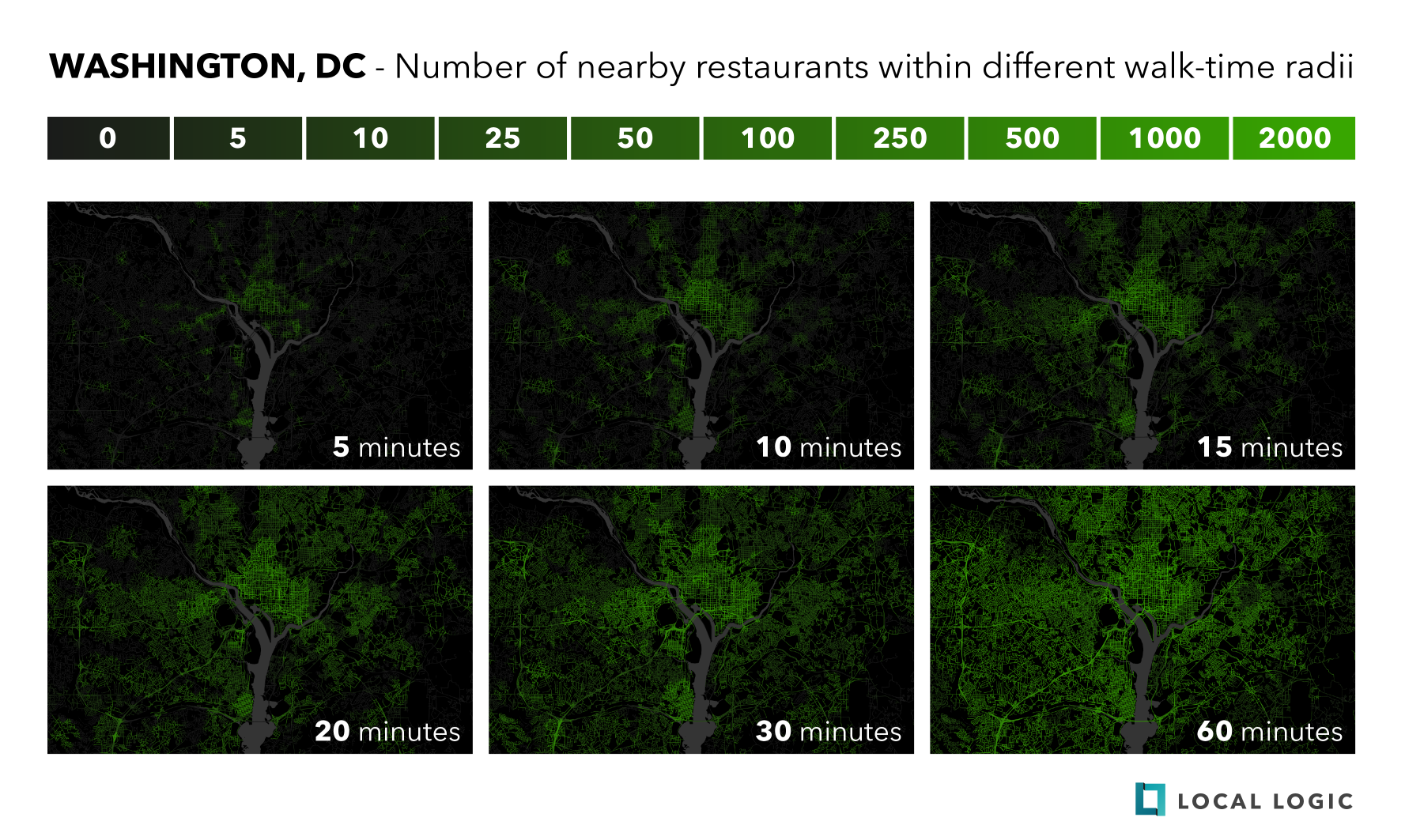Oakley Signs Joins Forces with Local Logic to Bridge the Gap Between Physical Signage and Digital Insights
Partnerships
| 12 Nov 2025

The desirability of an asset goes beyond knowledge of its construction, such as when and how it was built. Depending on what’s important to someone, access to certain services impacts their decision on where to live. Understanding the value of an asset is tied to how it fits with different lifestyles based on its surroundings. For some people, that directly relates to walkability and how practical it is to fulfill their needs on foot.
A popular deciding factor is the quantity and proximity of restaurants to a target location. Having more restaurants nearby allows for a greater diversity of cuisines and price ranges, which provides options for a wider range of people.
“Where’s the best place to grab Italian food?”
“Have you ever eaten at [fill in the blank]?”
These are conversations that city dwellers have likely overheard or participated in as food is central to the North American urban experience. Often, neighborhoods see a rise in popularity when trendy eateries open up in the area. A new restaurant with positive reviews can certainly draw people in from various parts of the city!
However, the reality is that we are all pressed for time. So, the convenience of having nearby options ranks highly among deciding factors when it comes to where we live. After all, one of the perks of living in the city is that it allows you to enjoy an astonishing variety of options mere steps from your front door.
Restaurants play a crucial part in real estate markets, on both commercial and residential levels, as people continue to dine out and discover new cuisines. As a leading force behind regenerating neighborhoods, local eateries are a key component of mixed-use development and urban retail.
In addition to being important contributors to food tourism, restaurants attract real estate developers and employers who are considering new locations based on amenities.
According to Chris Hollenbeck, senior director at Cushman & Wakefield commercial real estate firm, “[restaurants] are typically one of the higher rent payers in a new development because their sales can support the higher rent.” He goes on to say that high-paying restaurants benefit developers as those establishments can help hit financial goals.
Restaurants are also a growth driver for neighboring businesses and shopping centers. A study by the International Council of Shopping Centers has found that food service creates a halo effect on surrounding stores, allowing the latter to see higher returns.
Developers of multifamily and residential projects also place great importance on restaurants.
“Restaurants are vital to the lifestyle in a neighborhood that builders want to plug into. Every developer is trying to locate close to top restaurants to attract the best buyers and renters,” said Paul Williamson, principal with TrueCraft Residential and developer of Novella at Arcadia.
People seeking to purchase or rent homes want to be within walking or cycling distance from coffee shops and restaurants. An asset’s value, therefore, increases in relation to its proximity to services and the availability of diverse options.
We used our Points of Interest (POI) data to visualize the number of available restaurant options within a street network that neighbors the Potomac River in Washington, DC. A bright green street segment signals that there are approximately 2,000 restaurants within walking distance. As walk times increase from 5 to 60 minutes, the brighter the segments become. Based on this map, we can see which locations have easier access to restaurants — pointing out hot spots that can be more enticing for home seekers and developers.

This is only a small portion of what our data can do! Our POIs provide granular information about any given location in Canada and the US at the address level, adding more context to its surroundings.
Going beyond restaurants, we can plot datasets based on various categories of POIs, ranging from groceries, fitness facilities, independent vs. chain businesses, and more, to determine the desirability of an asset based on a deeper understanding of its proximity to the nearest point of interest.
If projects like these are interesting to you, you can request sample data to start getting precise location insights.